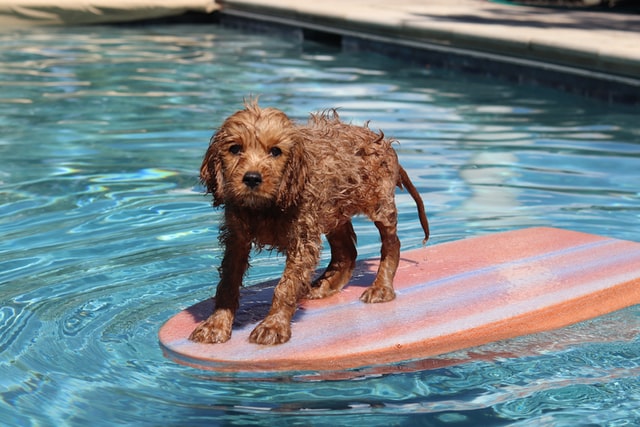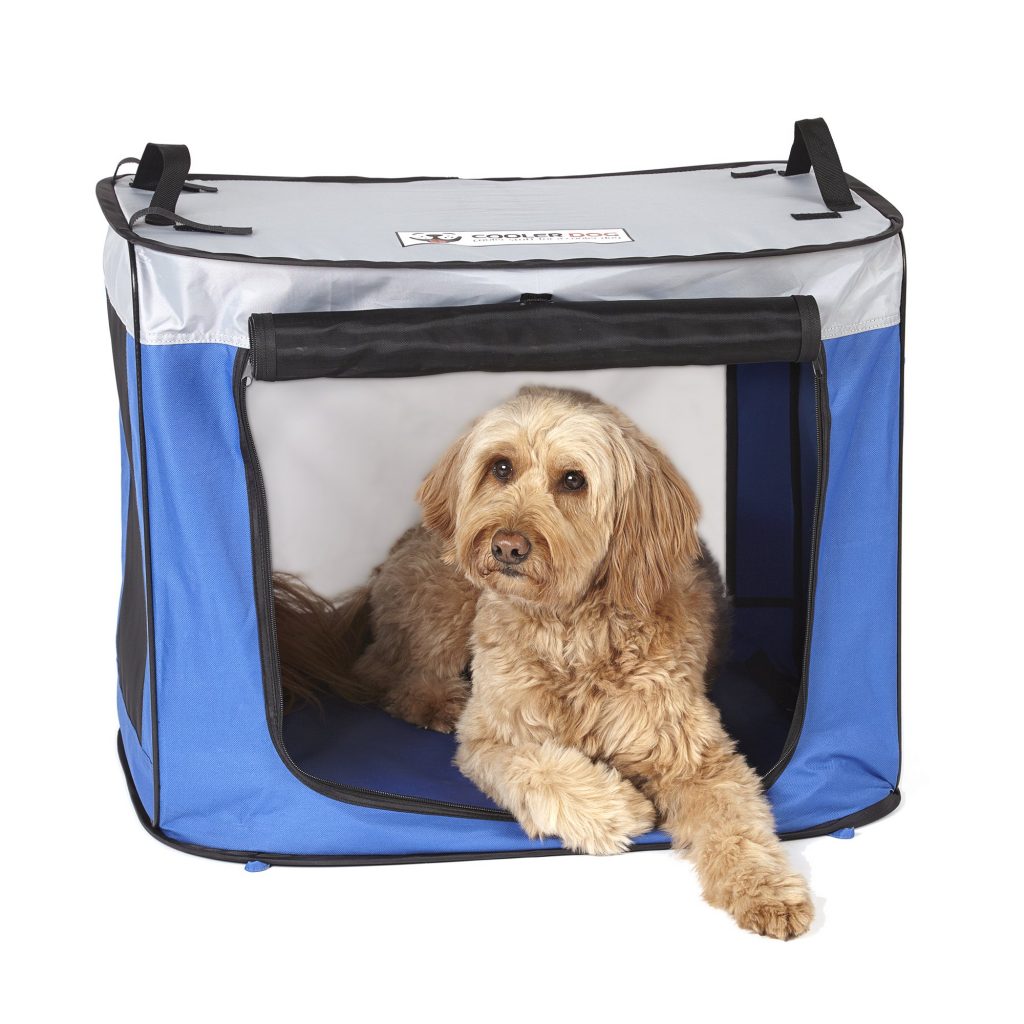
Summer can be filled with fun outdoor activities, but with the hottest days of the summer still to come, it is essential that we are prepared for the dangers of the heat for our precious pups.
Heatstroke is a condition that occurs when a body is exposed to high temperatures which cause the normal systems that cool the body down to fail. Dogs are even more prone to heatstroke than humans because they don’t sweat the way that humans do. They have small sweat glands on the pads of their feet, but panting is their primary way of cooling off.
Because of this, we need to be extra attentive to our dogs in the summer heat to keep them safe and healthy.
The first step to keeping your dog safe, is to be able to recognize when they’re not. If your dog has any of these symptoms and you suspect that they have heat stroke, contact your vet immediately.
1. Your dog is unsteady on their feet
When dogs start to overheat, they can get dizzy which makes them stumble or sway. This could be a sign that something is seriously wrong.
2. Your pup is panting more than usual
If you notice that your dog is breathing heavily or panting excessively, this may be a sign that they are trying to cool down quickly. They are trying to let out all of their heat through their breath.
3. Your dog has bright red, blue, or grey gums.
If your dog’s gums are any other color that you’re not used to, they may be dehydrated or not getting enough oxygen.
4. Your dog is drooling excessively and their saliva is particularly thick and sticky
Thick saliva is a sign of dehydration and, paired with excessive drooling, is a warning sign for heat stroke.
5. Their skin is not as elastic as it should be.
Pull gently at the skin behind your dog’s neck and let go. The skin should bounce back to where it normally falls easily. If it stays raised where you pulled it, your pup may be dehydrated.
6. Your dog is not responding to their name
Dogs can become easily disoriented when they are overheated and dehydrated. If they have trouble responding to you or are behaving abnormally, something may be wrong.
7. A lack of urine can be a sign of dehydration.
If your dog is having trouble going #1 or hasn’t gone for a long time, they could be overheating.
8. Your dog has a fever.
Any temperature above 103 degrees Fahrenheit is considered a fever in a dog.
9. Your dog is shaking or shivering
If your pup is shaking even in the heat, this could be a sign of muscle tremors and weakness brought on by the high temperatures.
10. Your dog has an abnormally rapid pulse
Place your hand on your dog’s chest near their elbow joint to feel your dog’s pulse. If your dog’s pulse is high, it could be a sign of heat stroke. Keep in mind that different dogs have different speed pulses. Older, larger dogs have slower pulses than puppies or small dogs. Get a feel for your dog’s pulse on a normal day so that you can compare.
11. More serious symptoms may include collapsing, seizures, vomiting, or diarrhea.

The causes of heat stroke
Heat stroke is caused when your dog overheats and can’t cool down quickly enough. This can be caused by the weather, activity, or location.
- High temperatures: Hot weather is the main cause of heat stroke. If the weather forecast calls for high daily temperatures, limit your dog’s time outside and make sure they have a cool place to relax inside.
- Humidity: Humidity can exacerbate the effects of hot temperatures, making it even harder for dog’s to cool down. Always pay attention to all weather factors.
- Direct sun: Try walking in the early morning or evening when the sun isn’t directly overhead. I always make an effort to walk on the shaded side of the street as well. If you’re relaxing in the backyard or at a park, set up under a tree to keep the sun off of your pup!

CoolerDog Pop-up Shade Oasis
Our recommendation
This easy to set up dog tent/crate is perfect for hot days on the go! Take this with you to the beach, park, or your friend’s backyard to make sure your pup stays out of the harsh sun.
- High levels of activity. Keep walks short in the summer months. If you are planning on more strenuous activities like running or hiking, be sure to take frequent water breaks to prevent dehydration (for yourself, too!)
- Lack of air conditioning. A lot of people are tempted to turn off their AC when they leave for the day to save money. If you’re dog is still at home, though, it can get too hot for them faster than you think. To be safe, keep your house cool whenever a living being is staying home.
- Never leave your dog in a parked car. Not even if it isn’t that hot out, the car is in the shade, or the windows are down. Temperatures can rise quickly in cars to dangerous levels.

Dogs at higher risk for heatstroke
- Older dogs and dogs with health issues can have difficulties regulating their temperature. They also can become exhausted from small amount of activity. Keep walks short and sweet and stop often for water.
- Breeds with flat faces are also more susceptible to the heat.
- If your dog has a heavy coat, they have likely been bred for colder temperatures. The built in blanket of their fur that is so great in the winter can be a serious obstacle to summer fun.
- Overweight dogs have an extra layer of fat keeping them warm.
- Working dogs can get so focused on a task and will forget to take breaks. It’s extra important that if your dog is athletic, you enforce water breaks even if they don’t appear tired.
If you know you’re dog is at high risk, try taking some preventative measures like hooking them up with a cooling vest on hot days outside. Check out our recommendation!

Ruffwear Swamp Cooler Jacket
Our recommendation
Your dog will be stylish, safe, and comfortable. This vest works with all harnesses!
How to treat heat stroke
Remember, you are not a medical professional. You should always call your veterinarian if you suspect that your dog is suffering from heat stroke. Here are some things you can do to help while calling or on your way to the vet’s office.
- Take your dog’s temperature. A normal temperature is around 101 degrees Fahrenheit. Anything above 103 is considered a fever and can be a sign of heat exhaustion. At this point, you should begin efforts to cool them down. Anything above 105 is heat stroke and can be extremely dangerous. You should begin cooling your dog down immediately wherever you are before bringing them to the vet.
- Offer your dog some water. If they do not want to drink, do not force them. Instead, wet their tongue with water to help them cool down.
- Place damp towels on your dog’s body. The water will help them to cool off. Replace these towels regularly and use room temperature water.
- Do not cool them down too quickly. To avoid shock, always use room temperature water when cooling down your pup.
- Stop when your dog’s temperature reaches 103 degrees. Take their temperature periodically and stop all cooling efforts when you reach 103 degrees. Your dog should now be able to continue to cool off on their own.
- Call your vet. Again, calling your vet is the first thing you should do when you suspect heat stroke. They will have the best and most accurate medical advice.
For more advice on how to keep your dog cool and safe in the summer months while still having a blast, check out our blog about how to cool down a dog in hot weather!




Leave a Reply